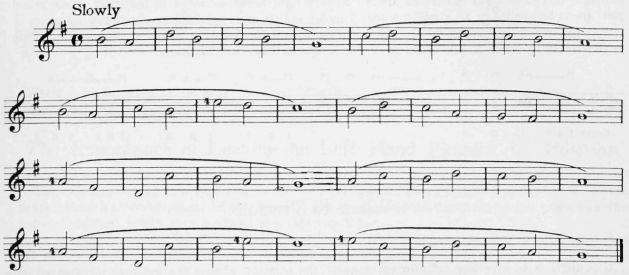Mandolin Self Instructor, online tutorial - Page 41
A simplified self learning system for the Mandolin with tuning instruction, song folio, chord diagrams, sheet music and PDF for printing. By ZARH MYRON BICKFORD
| Share page | Visit Us On FB |
|
41
Half Notes (continued) be a slight break, corresponding*to a comma or the taking- of a breath in reading, at the end of a
slur, each new phrase being begun with a slig-ht accent or emphasis. Careful attention to the phrasing, as indicated by the slurs, marks the difference between musician- ly playing and the mere haphazard throwing together of a succession of notes. Phrasing makes a melody say something. The occasional use of the fourth finger is to make the flow of the melody smooth- er by avoiding the crossing of string's and by keeping the same quality of tone by remaining- as long as pos- sible on one string-. |
||
|
Tremolo Melody |
||
 |
||
|
(SPECIAL NOTE) "Idly Dreaming" rBicfybrd) may be used here.
Starting- and Stopping- the Tremolo
As previously explained, the tremolo starts with a down stroke and ends with an up stroke, and
in this connection it should be said that the first stroke of a tremolo should be a real stroke - coming- toward the string- from a little distance, rather than being laid against the string. This init- ial impulse gives the hand and the movement an impetus and steadiness which is difficult to attain without it. The other extreme should not be indulged in, however, that of swinging the hand back and forth,
getting"under headway'/ before the pick is in contact with the string. The following Example illus- trates, as nearly as can be done with signs, the starting and stopping of the tremolo, the waved line indicating its continuance. When the movement of a piece is moderately quick, and the tremolo is stopped either between two notes or at the end of a note immediately followed by a single stroke, there must be enough of a pause to allow the hand to prepare itself for the next down stroke or tremolo, as the case may be. This is usually best done by ending the tremolo with the up stroke on_ the last beat before the sin- gle note or the new tremolo. |
||